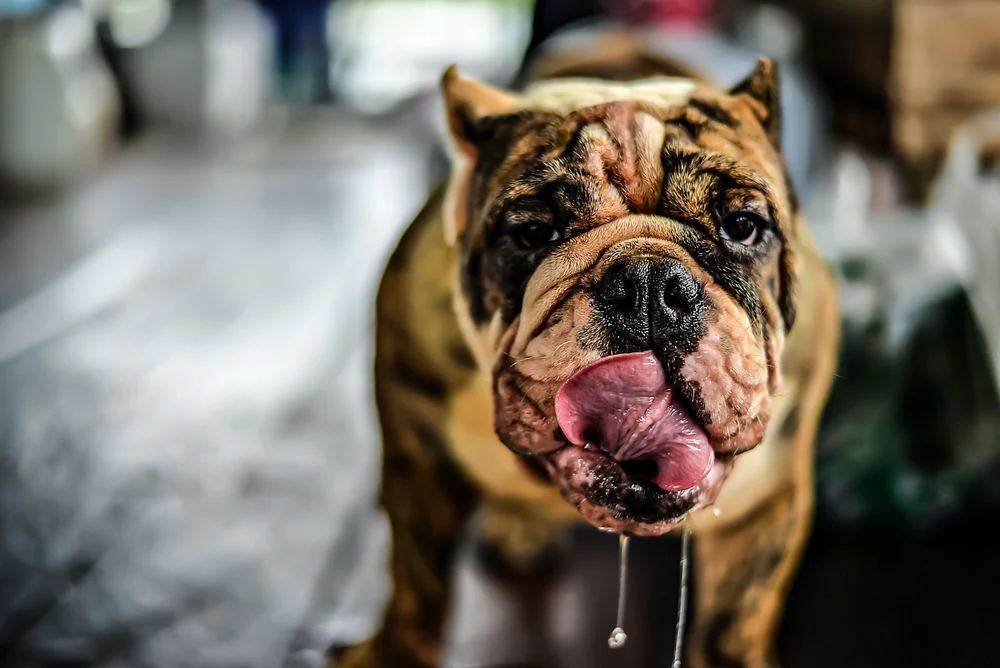Reasons Your Dog is Drooling: Dog drooling is common and seen in dogs for many reasons: when they’re happy, when they’re excited, when they smell something good, when they’re thirsty, and when they’re hungry.
While most of the time drooling is nothing to worry about, there are a few times when it can be a sign that something is wrong with your dog.
In this article, we’ll discuss the 5 most common reasons your dog is drooling and when you should start to worry.
There are a few common reasons why a dog might drool excessively. Dogs might drool if they have an infection in their mouth, such as gingivitis.
They might also drool if they have a dental abscess or if they are experiencing pain from a toothache.
Also Read: 5 Simple Tricks to Stop Aggressive Puppy Biting
Some dogs might drool simply because they are excited or happy, while others might drool due to stress or anxiety.
Let’s get into detail, here are 6 reasons Your Dog is Drooling

They might have a toothache
There are many potential causes for a dog to drool, including dental problems. If a dog is drooling excessively and seems to be in pain, it is possible that he has an infected tooth or other dental problem. Dental problems are relatively common in dogs and can cause a great deal of discomfort. If your dog is drooling and seems to be in pain, take him to the veterinarian for a check-up or vet recommended dog toothpaste.
Be experiencing nausea
A dog experiencing nausea will often drool excessively. This is likely due to the fact that the dog’s stomach is empty and is trying to produce more saliva to help digest food. When a dog feels sick, it may also refuse to eat, vomit, or have diarrhea. If your dog is drooling and seems to be feeling ill, take it to the veterinarian for diagnosis and treatment.
Have a condition called ptyalism, which is excessive production of saliva
Ptyalism is a condition characterized by excessive production of saliva. This can cause the dog to drool excessively, and can also lead to problems with swallowing.
The underlying cause of ptyalism can be difficult to determine but may be related to a variety of factors including infection, inflammation, or neurologic disorders.
Treatment for ptyalism depends on the underlying cause and may include medications to reduce saliva production, or treatment of the underlying condition.
Infection in their mouth, such as gingivitis.
The dog is drooling because it has an infection in its mouth, such as gingivitis. Gingivitis is a form of gum disease that is caused by plaque and bacteria build-up on the teeth and gums.
The infection causes the gums to become inflamed and swollen, which can lead to tooth decay and loss. The dog will likely need to see a veterinarian in order to get treatment for the infection.
Gastrointestinal Problems
Your dog might be drooling because of gastrointestinal problems. This could be caused by a number of things, such as an obstruction in the intestines, inflammation of the stomach or intestines, or a tumor. If your dog is drooling and has other symptoms, such as vomiting, diarrhea, or loss of appetite, it is important to take him to the veterinarian for diagnosis and treatment.
Rabies
Your dog drooling may be a sign of rabies. Rabies is a viral disease that can affect all warm-blooded animals, including humans. The rabies virus is usually transmitted through the saliva of an infected animal, most commonly through a bite.
The virus attacks the central nervous system, causing inflammation and swelling. As the disease progresses, the person or animal may experience seizures, hallucinations, and paralysis.
It is believed that there is no cure for rabies and it is fatal.
Final Thoughts
In conclusion, drooling in dogs can be a normal process, but it can also be a sign of something wrong. If your dog is drooling excessively, there are six possible reasons why, and you should take your dog to the vet to determine the cause.
Five of the six reasons are serious, so it is important to get your dog checked out as soon as possible if you notice excessive drooling.

